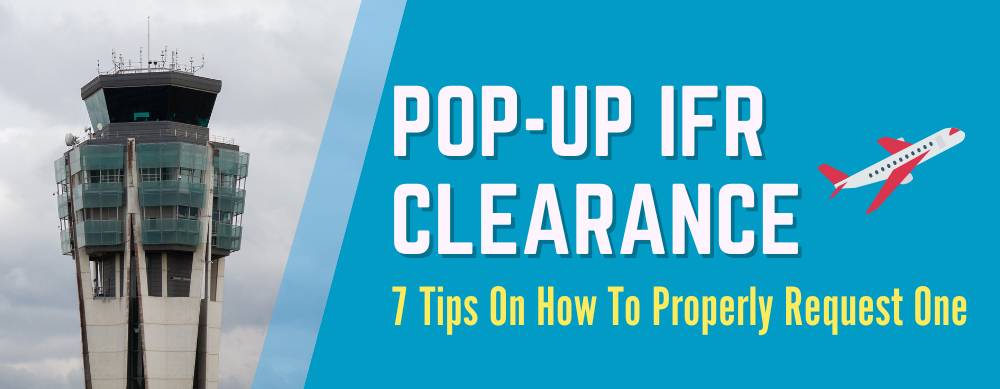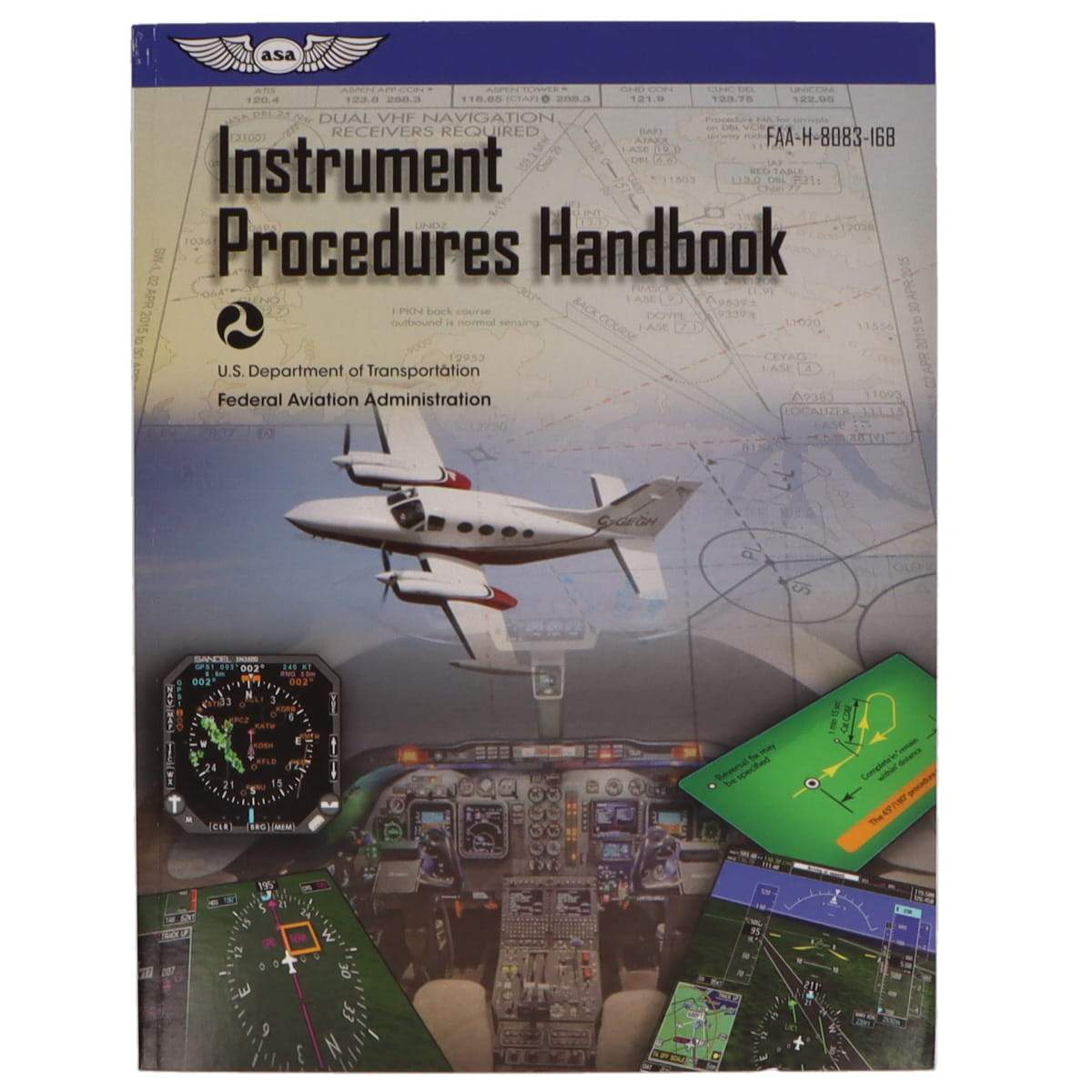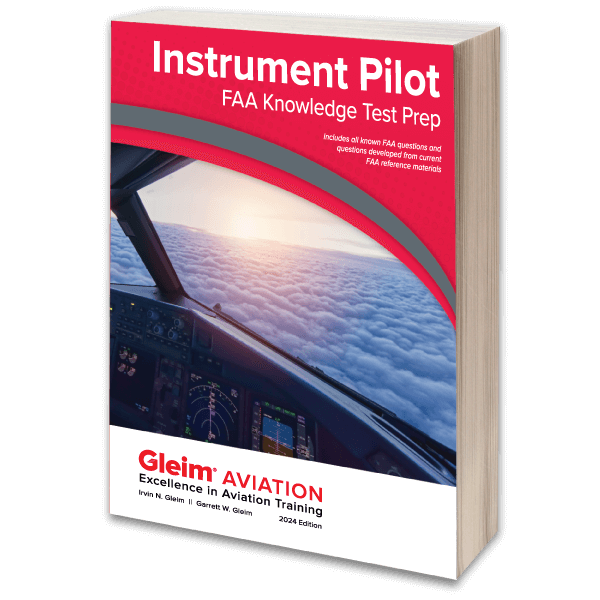As you're peacefully navigating on your flight path, you notice unexpected clouds forming below. Thankfully, you have an IFR rating and the necessary equipment for instrument flying. Unfortunately, you realize that you didn't file an IFR plan with flight service. But don't panic! The FAA has a solution for situations like this: a pop-up IFR clearance.
In this guide, we'll cover 7 of the important details you need to know about requesting this type of clearance.
 1. What is a Pop-up IFR Clearance?
1. What is a Pop-up IFR Clearance?
A Pop-up IFR clearance is an instrument clearance provided to instrument-rated pilots who are already in the air and flying under visual flight rules (VFR conditions).
Pilots can request this form of IFR clearance when VFR weather conditions appear to be deteriorating, such as encountering unexpected clouds or challenging weather, or when the pilot needs assistance navigating around terrain and obstruction clearance to reach their destination airport.
The process involves the pilot contacting Flight Service while in the air and requesting a "pop-up IFR" clearance. Flight Service will then work with air traffic control (ATC) to help grant the clearance for the pilot.
 2. When is a Pop-up Clearance Needed?
2. When is a Pop-up Clearance Needed?
You might need a pop-up if these circumstances unexpectedly take place:
-
Undercast forms
-
The overcast lowers
-
Encountering changing weather patterns
 3. Requirements to Request a Pop-up Clearance
3. Requirements to Request a Pop-up Clearance
When you are flying a VFR aircraft and encounter deteriorating weather conditions like lowering clouds or poor conditions, you will need to be able to switch to IFR operations quickly. But, before you can call up FSS and ask for a pop-up, some requirements need to be met.
Pilot Requirements
First, as a pilot, you should be IFR-rated, current, and proficiently equipped to handle instrument approaches, fly at specified IFR altitudes, and understand the complexities of IFR flight operations.
You will be expected to maintain or climb to at least the Minimum Instrument Altitude (MIA), Minimum Vectoring Altitude, and Minimum Obstruction Clearance Altitude (MOCA) as directed by ATC while also managing your own terrain and obstruction clearance.
Aircraft Requirements
Your aircraft will need to meet the standards outlined in the IFR Minimum Equipment List (MEL), this can be remembered through the acronyms TOMATO FLAMES, FLAPS, and GRABCARDD.
 4. How to Request a Pop-up Clearance
4. How to Request a Pop-up Clearance
If a pilot needs to request a pop-up clearance, they would need to contact ATC or Flight Service. Pilots would have to place the initial call asking for a pop-up and provide basic info along with their intention to transition from a VFR flight into flying IFR due to unforeseen weather changes or obstacles.
5. Example of a Pop-up Clearance Request Communications
Requesting a pop in the air is similar to the CRAFT process of getting your clearance on the ground. Here is an example of some radio calls between an Air Traffic Controller and a pilot with a pop-up request.
By this point, you are handed off to the next controller. IFR qualified pilots would need to already have their approach plate up, and maintain the minimum altitude for the approach as published unless given different directions from the controller.
6. Why It's Better to File and IFR Plan
It's better to land and wait for weather conditions to improve if you can land safely, and it's better to stop and file IFR from the ground if possible after landing. This is especially helpful when flying in busy airspace.
 7. The Problem with Requesting a Pop-up IFR Clearance
7. The Problem with Requesting a Pop-up IFR Clearance
Air traffic controllers can face a real problem when pilots flying VFR suddenly request an IFR clearance on the fly, without having filed a flight plan beforehand.
Controllers work hard to create an organized flow with how air traffic operates, but these impromptu IFR requests can throw a wrench into it. This causes the controller to have to scramble to rearrange air traffic to suit an aircraft that was under VFR needing instrument guidance—it's a big deal.
Plus, there's the potential limitation of a missed approach not being available for the desired IFR approach. If a pilot opts to air file through the FSS, it might take a while for confirmation, causing delays and more complications.
 This is a great video of a pop-up situation that can happen. This pilot intended to stay flying VFR and perform a few stop-and-goes at Palo Alto (PAO), but it seemed like the weather had other plans for him. He makes the wise decision to request a pop-up and switch to an RNAV approach.
This is a great video of a pop-up situation that can happen. This pilot intended to stay flying VFR and perform a few stop-and-goes at Palo Alto (PAO), but it seemed like the weather had other plans for him. He makes the wise decision to request a pop-up and switch to an RNAV approach.
Takeaway
The best solution to follow is that if you are already IFR-rated and in an aircraft capable of flying IFR to file an IFR flight plan before starting your trip. It's better to file IFR and not need to use it than to need it and experience delays receiving a pop-up IFR clearance.
Pop-ups are meant to be used when the weather changes unexpectedly, otherwise, the best option can be to divert to an alternate and maintain VFR. Air Traffic Controllers can get overwhelmed when there is a lot of IFR traffic in the designated airspace, and it could take more time than you intended to receive your instrument clearance through a Pop-up.
Taking as many precautions as possible before a flight ensures a safe path for yourself and your passengers. Expect the unexpected, but if the unexpected does happen, know there are solutions to help you reach the runway safely.
Fly safe!
Want to learn more about IFR?
Our guides are designed to help student pilots become professional pilots and for private pilots to brush up on their knowledge and skills.
-
IFR Clearance: How To Request & File (Examples / Requirements)
-
The Complete Guide to Aircraft Instruments [More Than Just the 6-Pack]
-
Pre-Departure Clearance Guide (PDC): What it is & How it Works
Did you find this article helpful?
Do you think we missed anything important or made a mistake? Let us know in the comments below!









